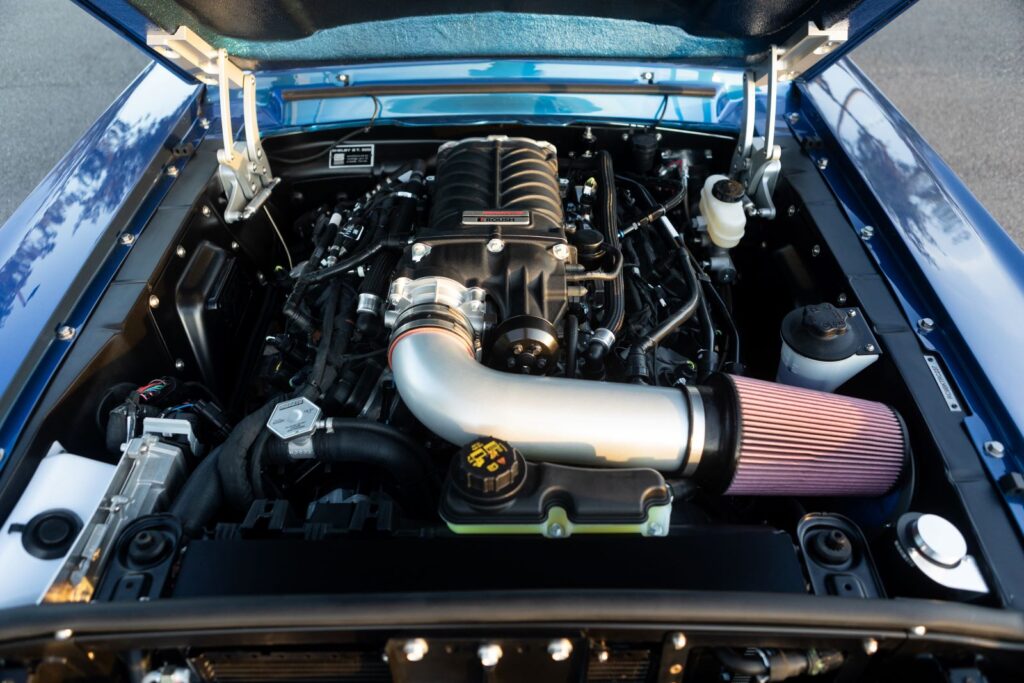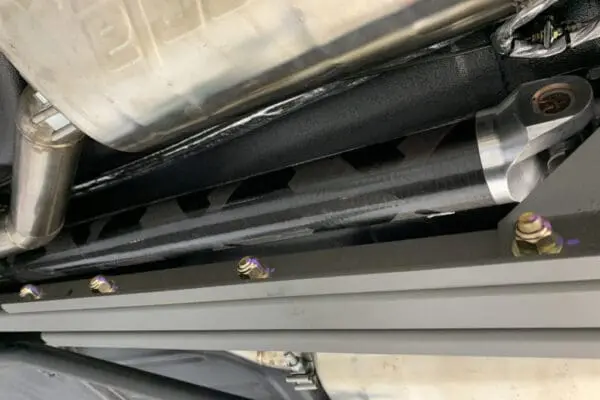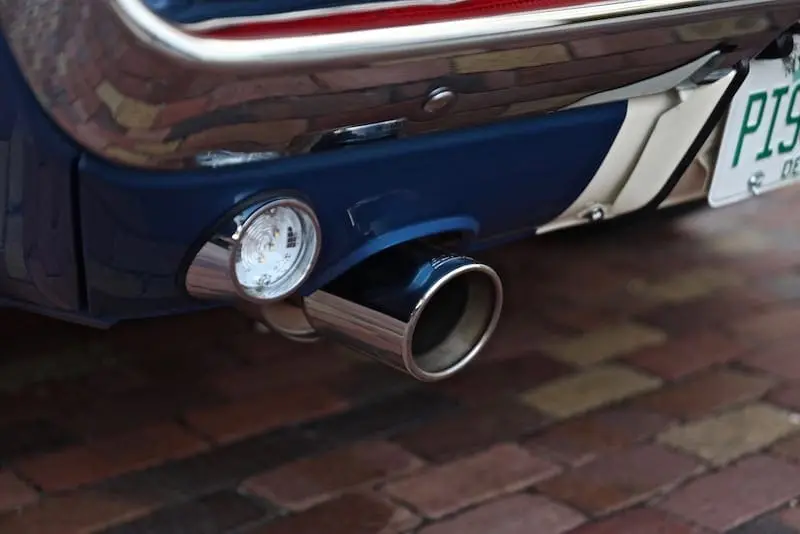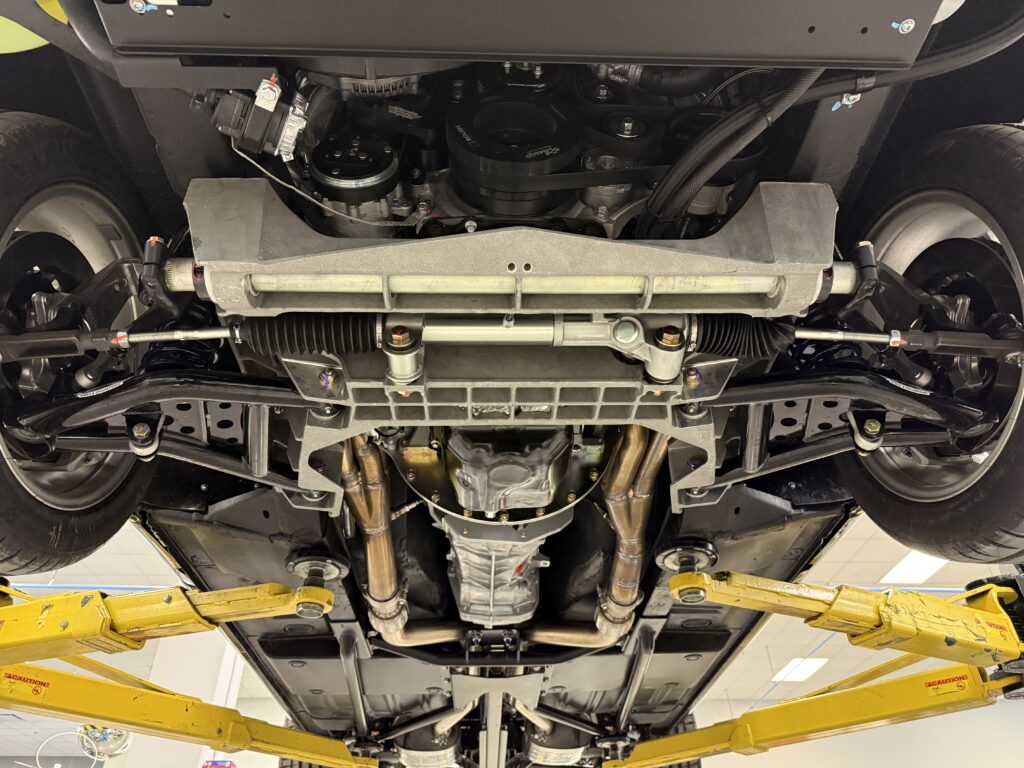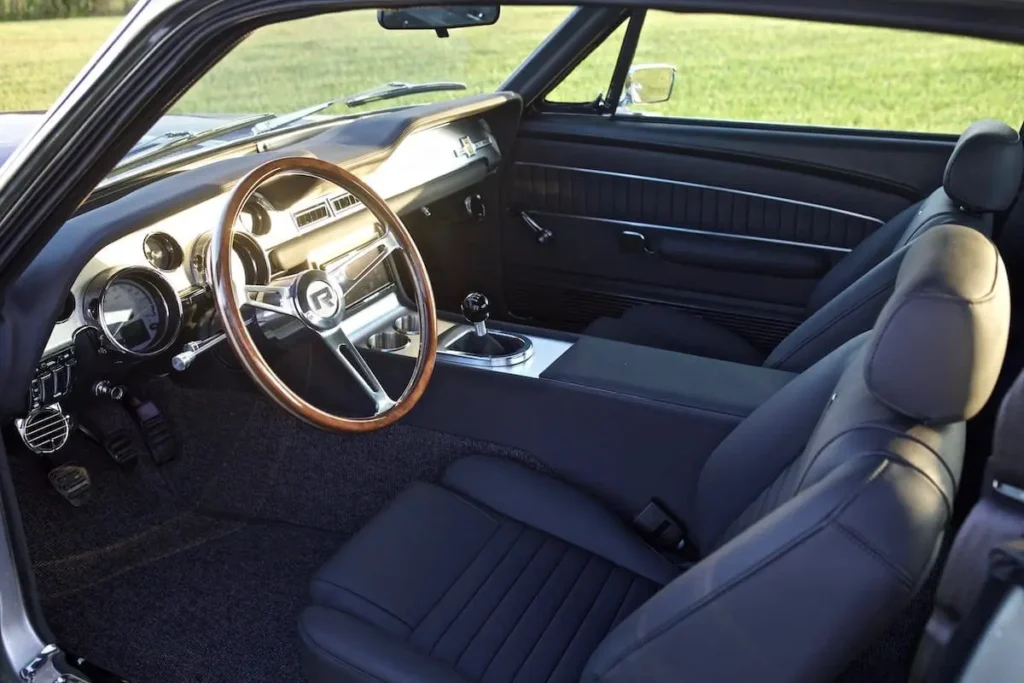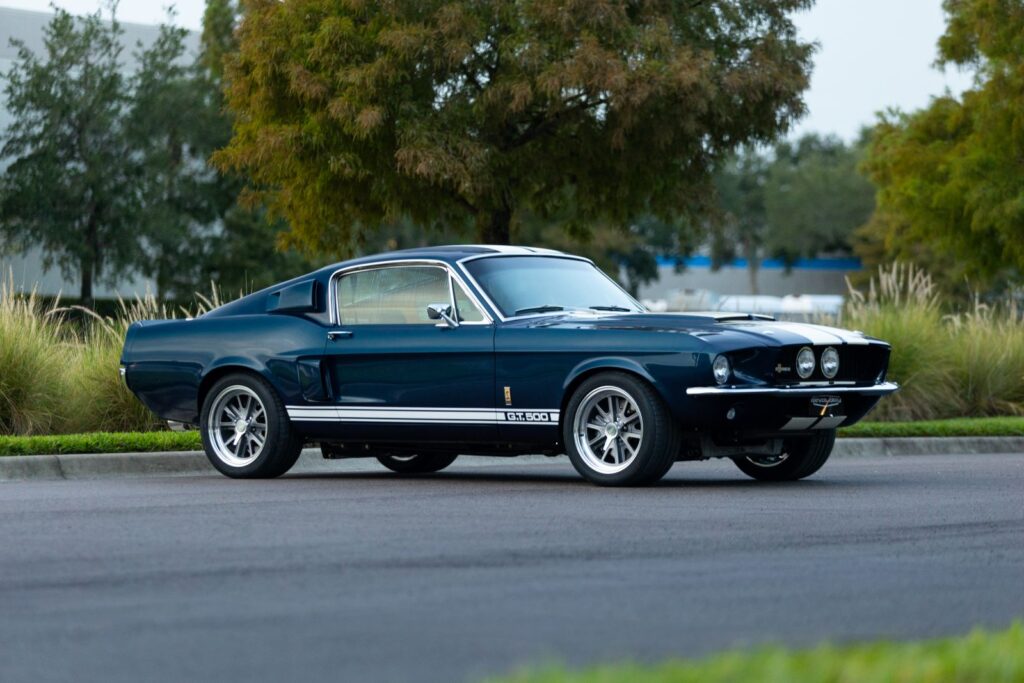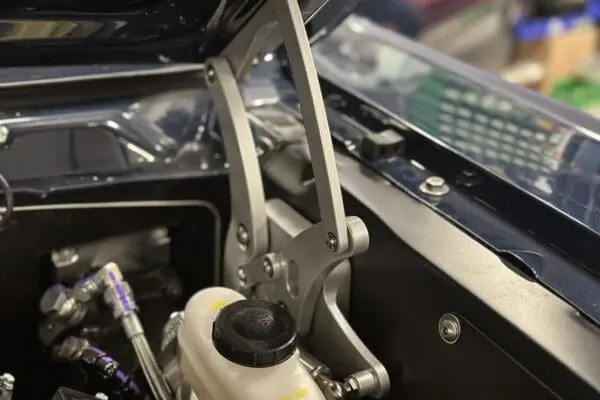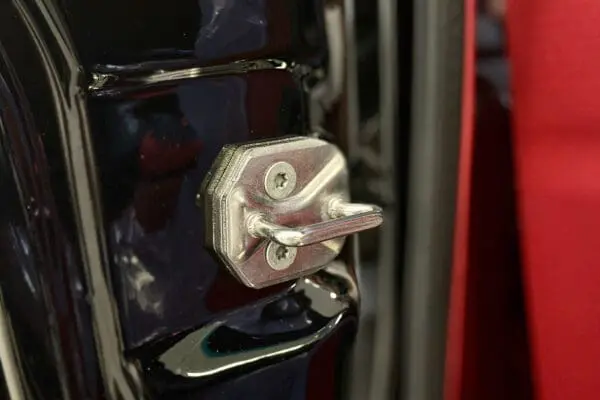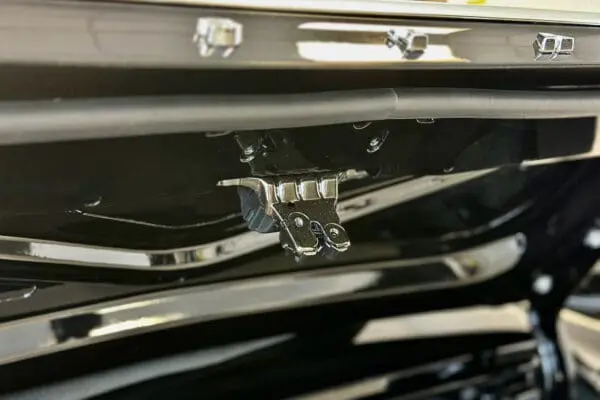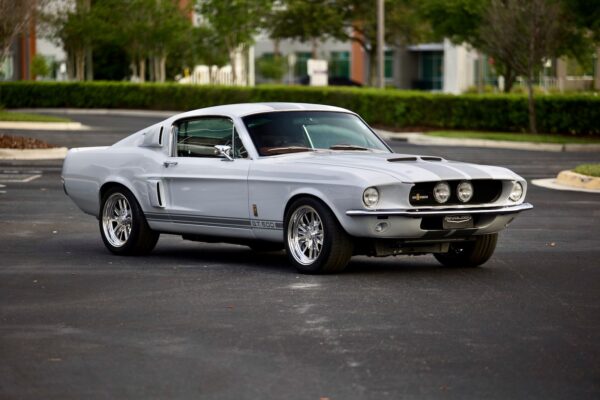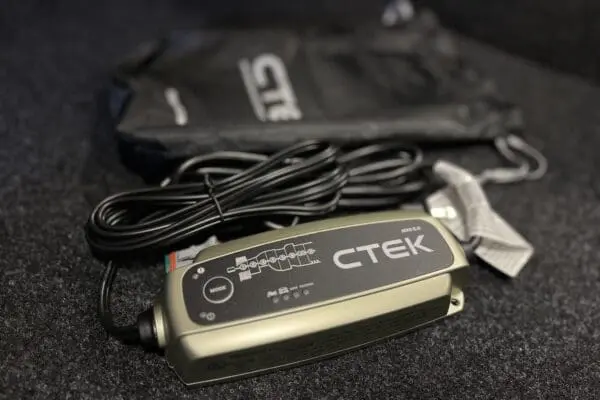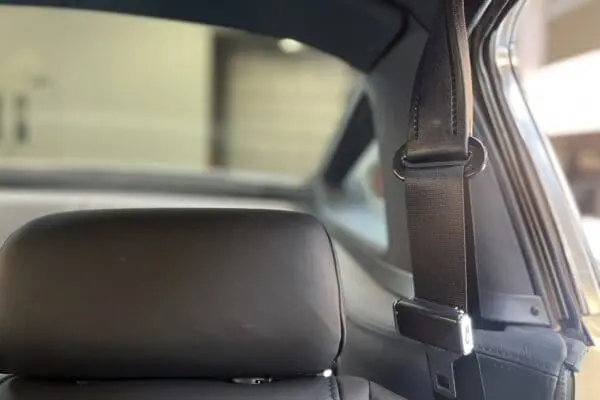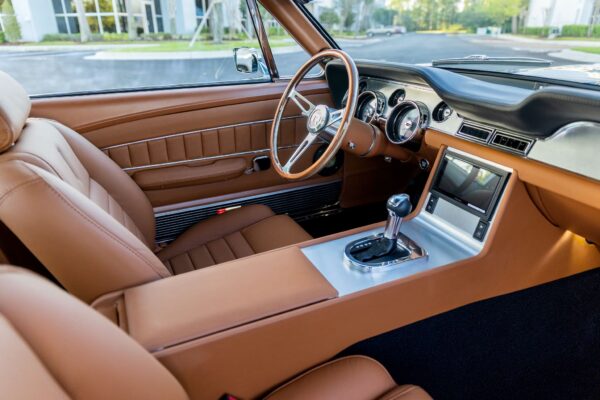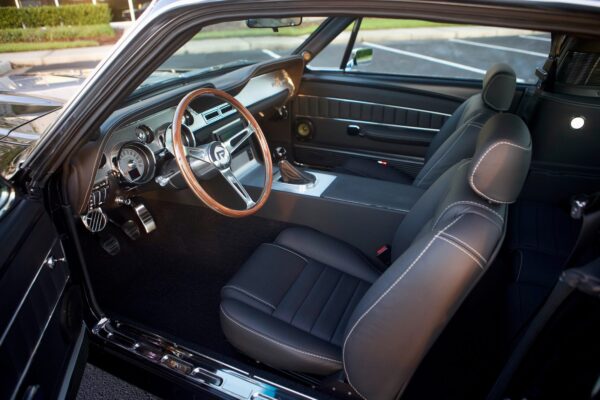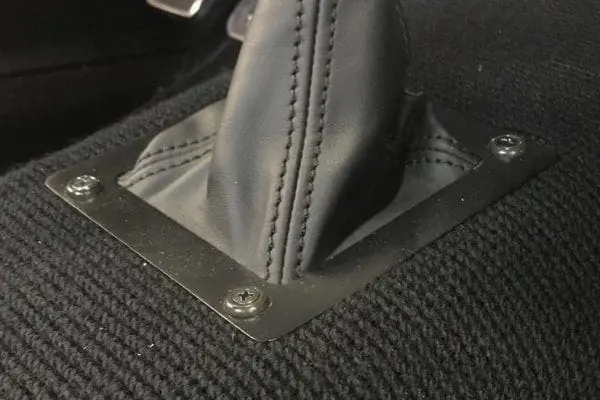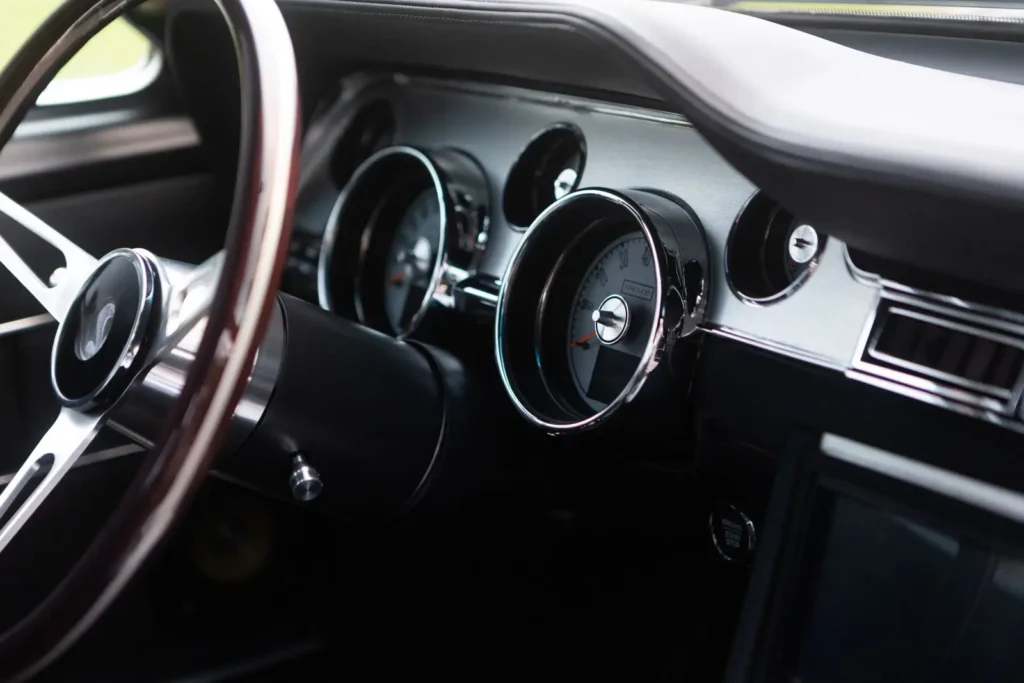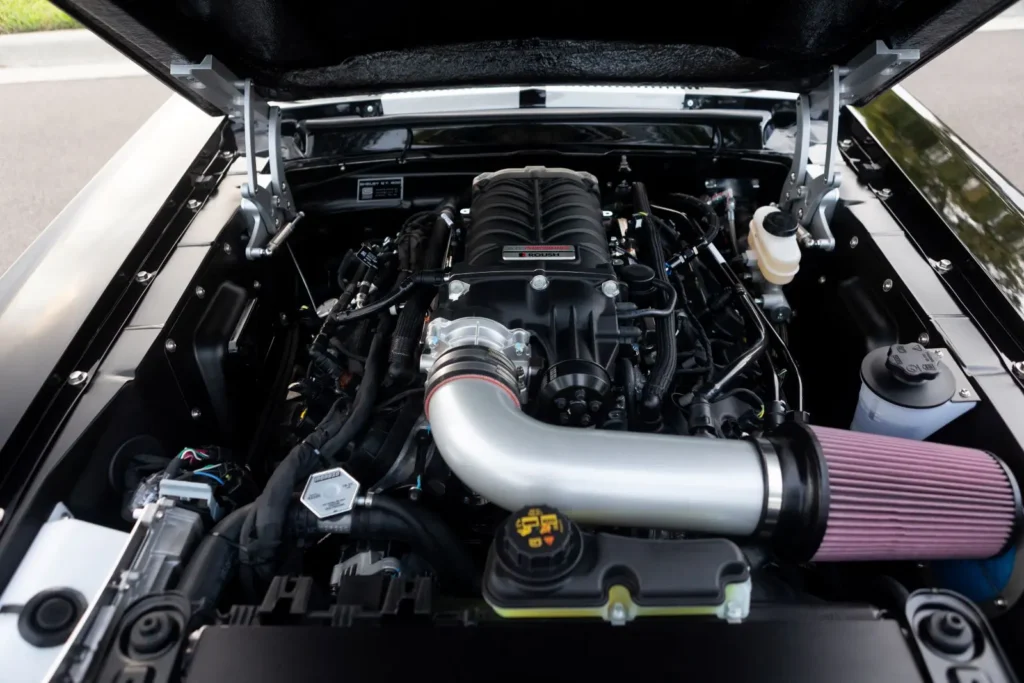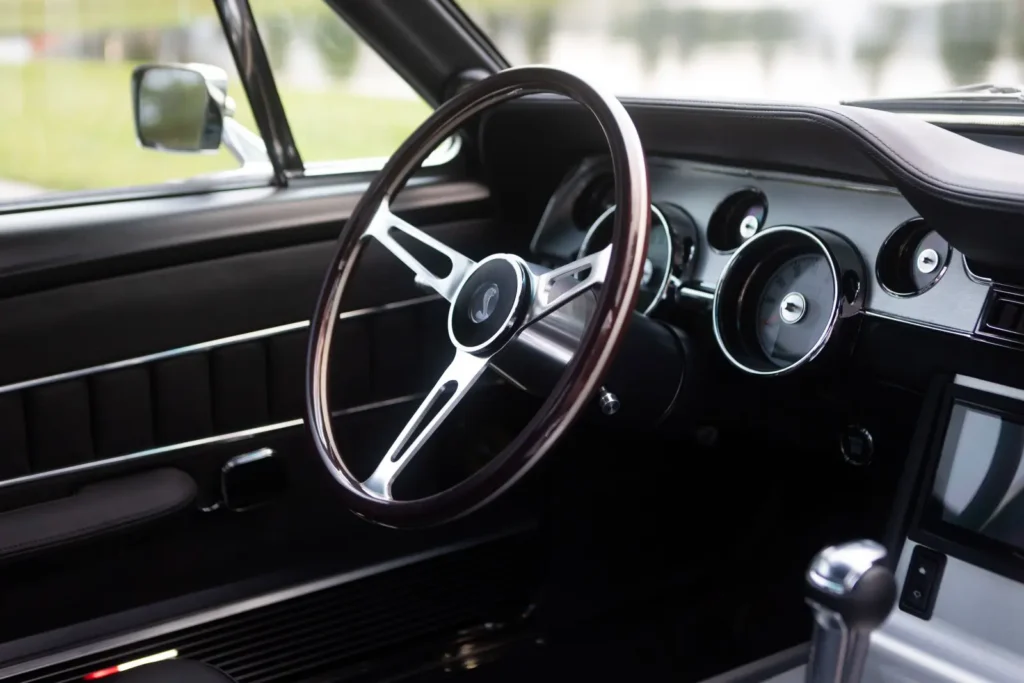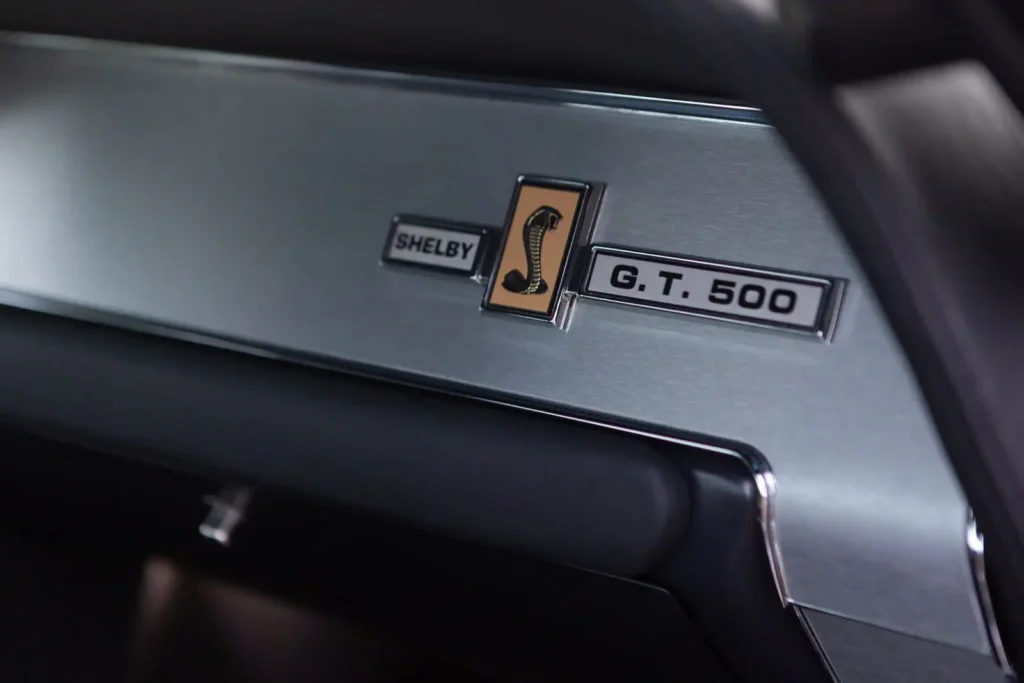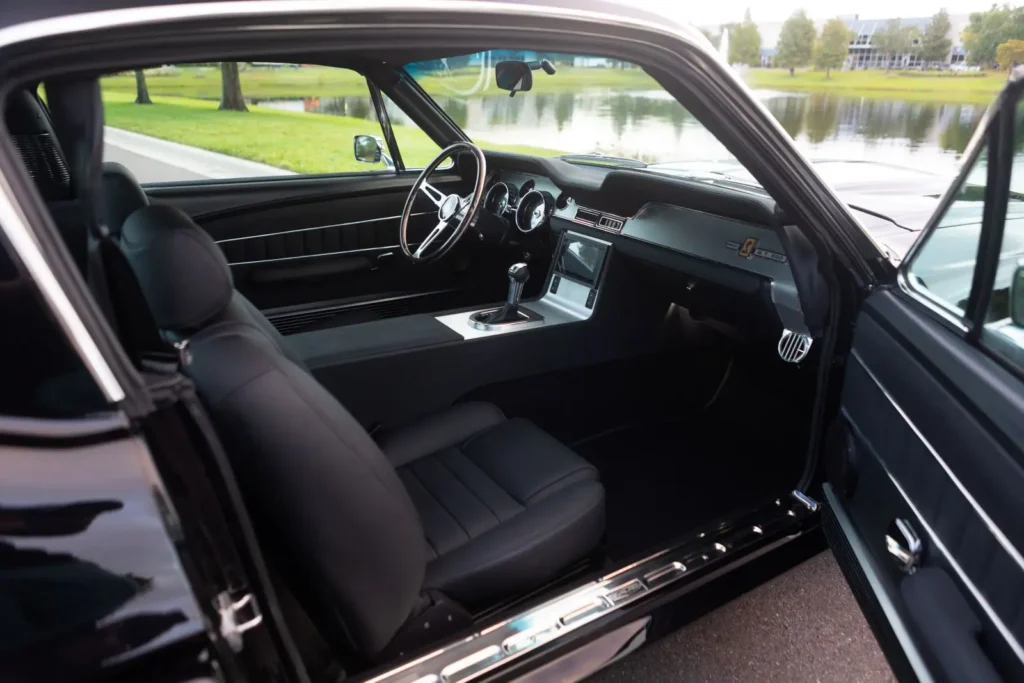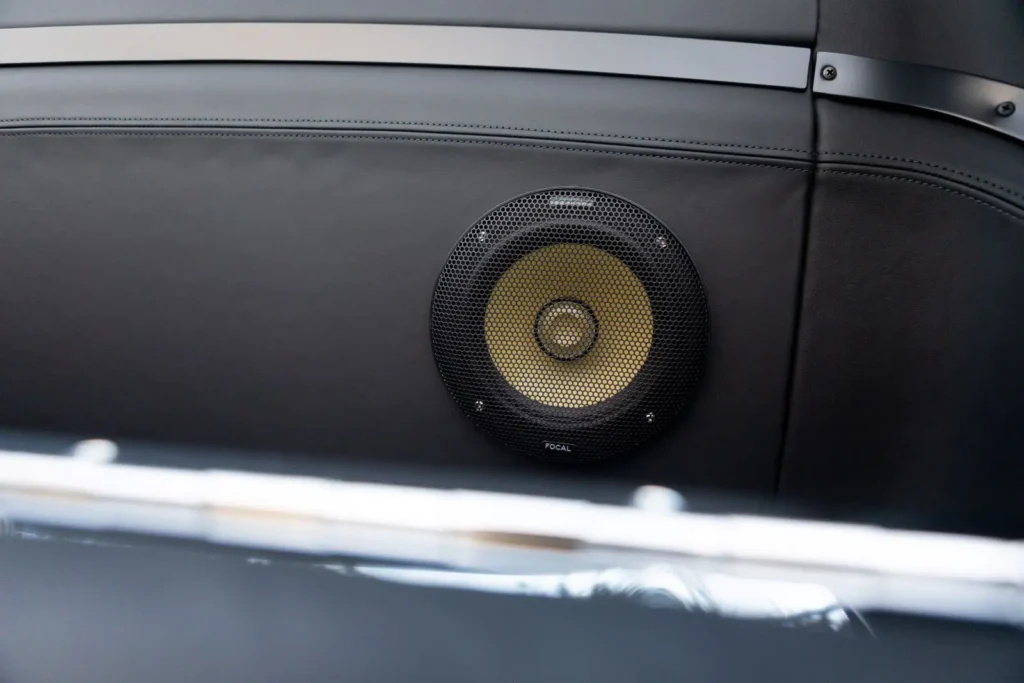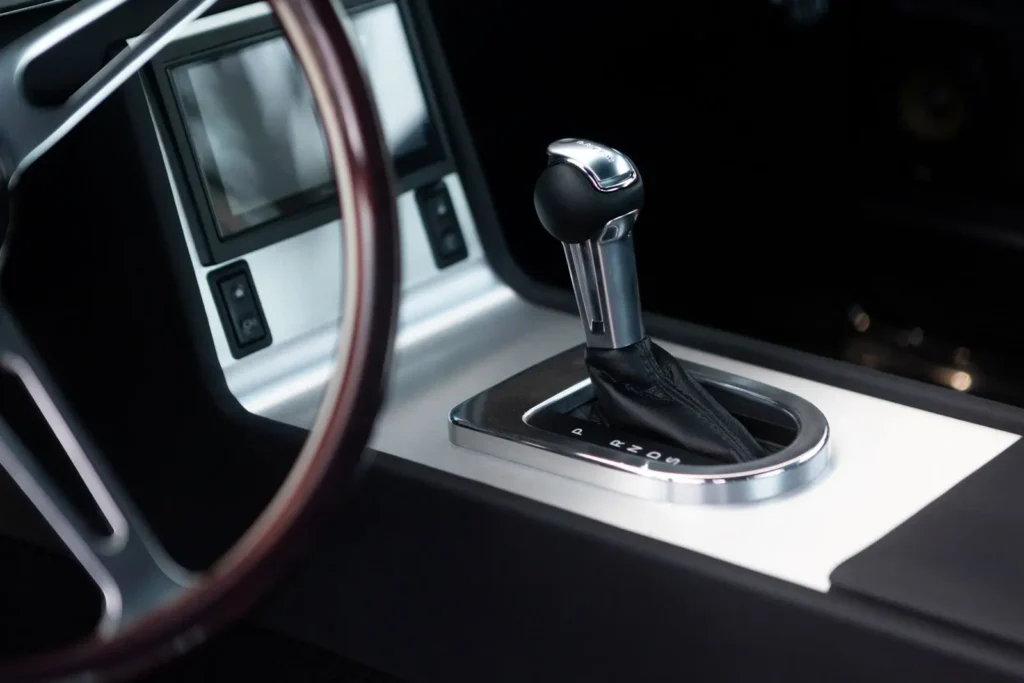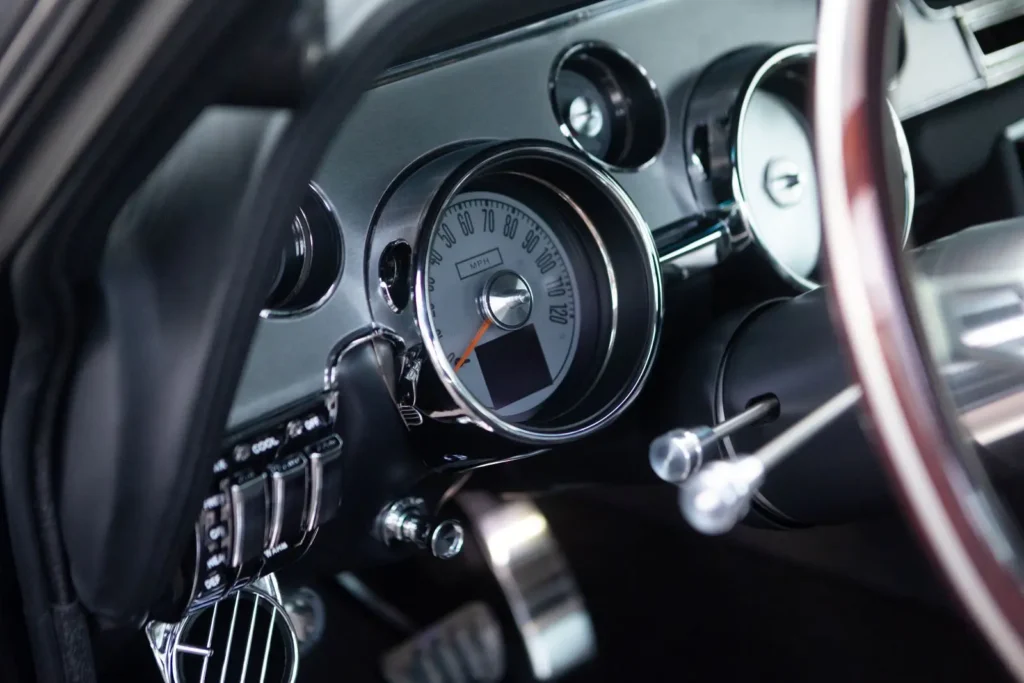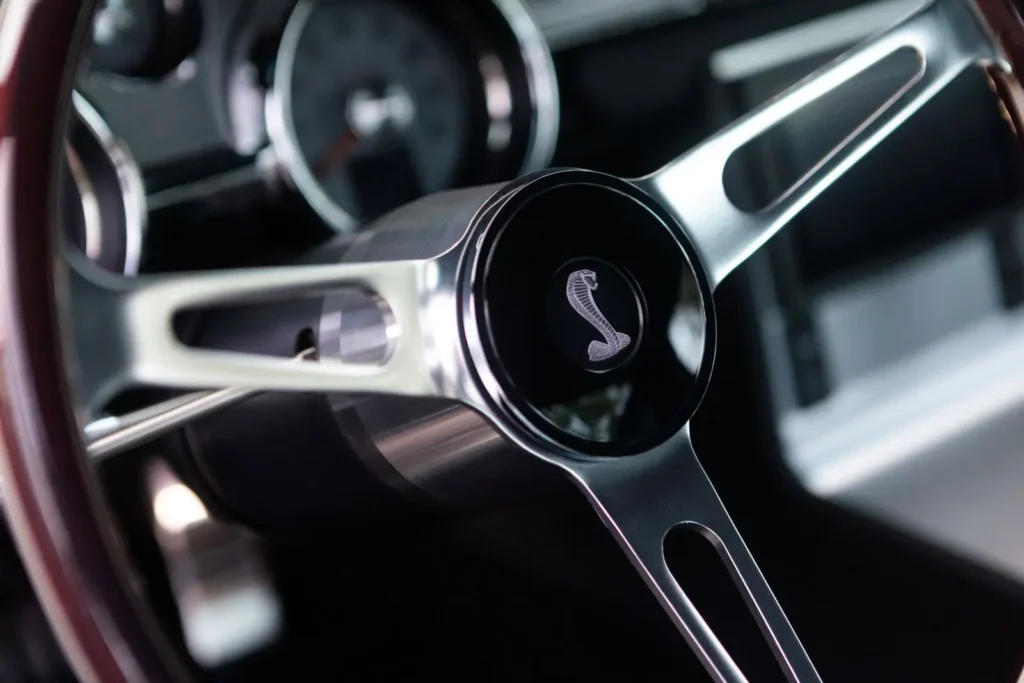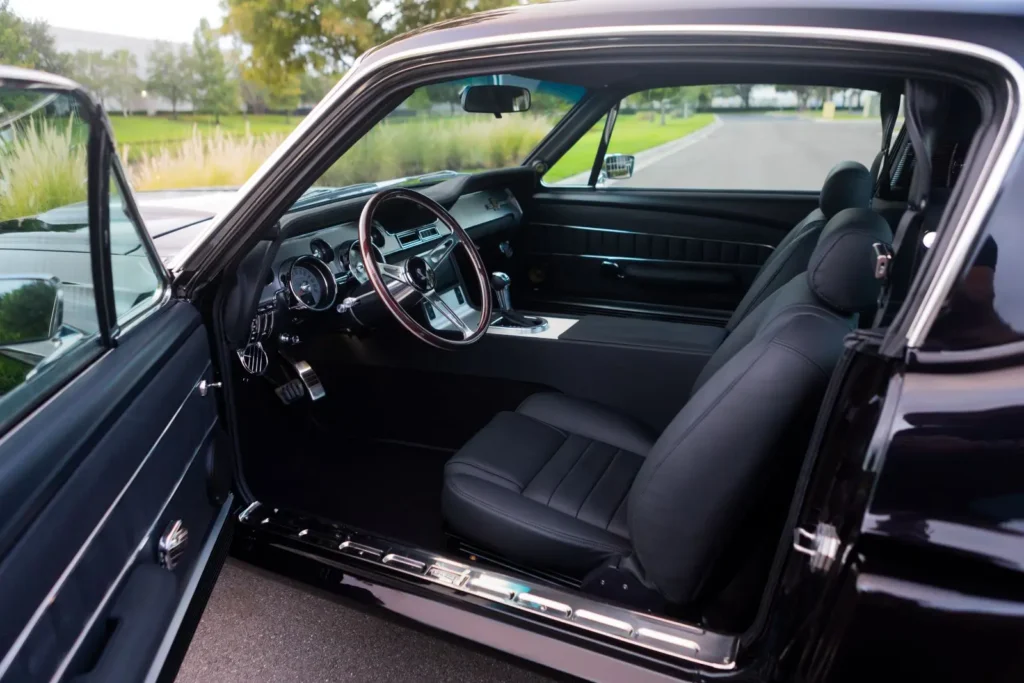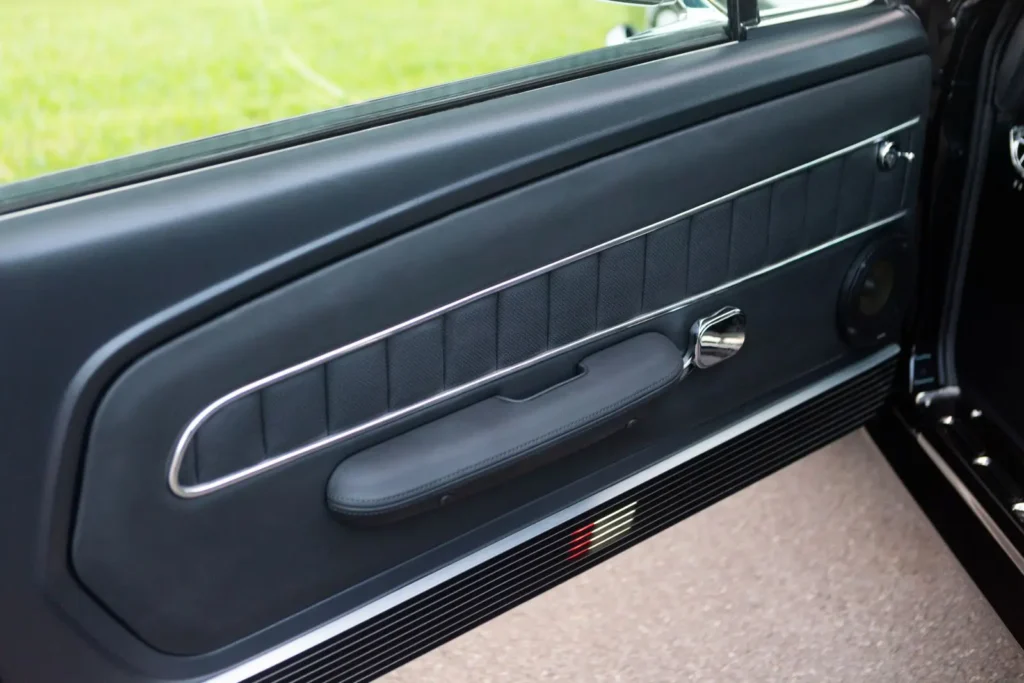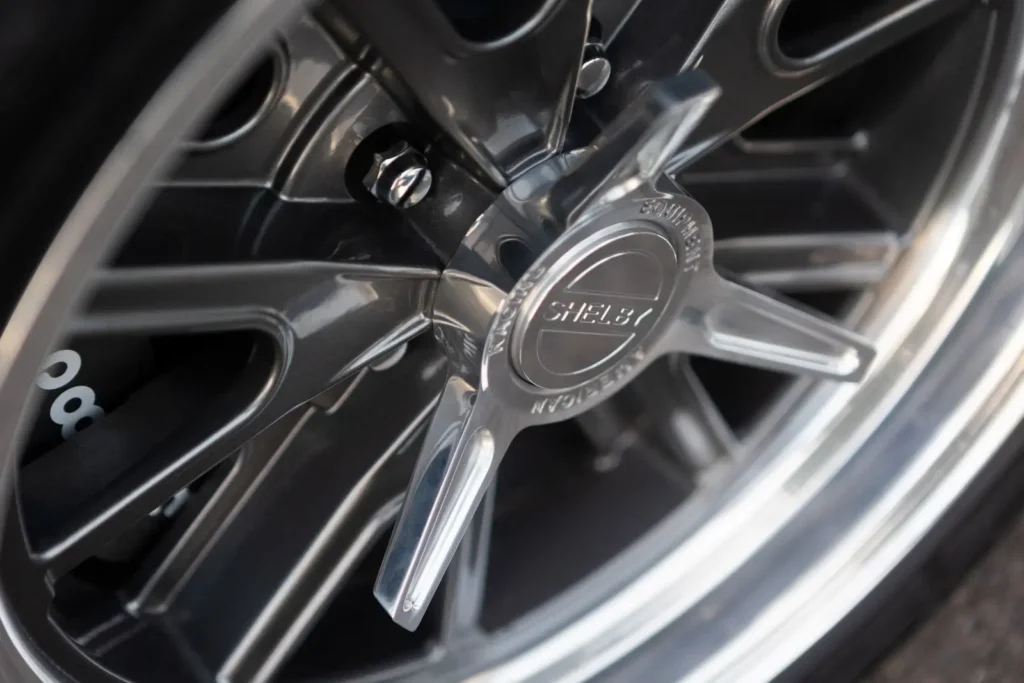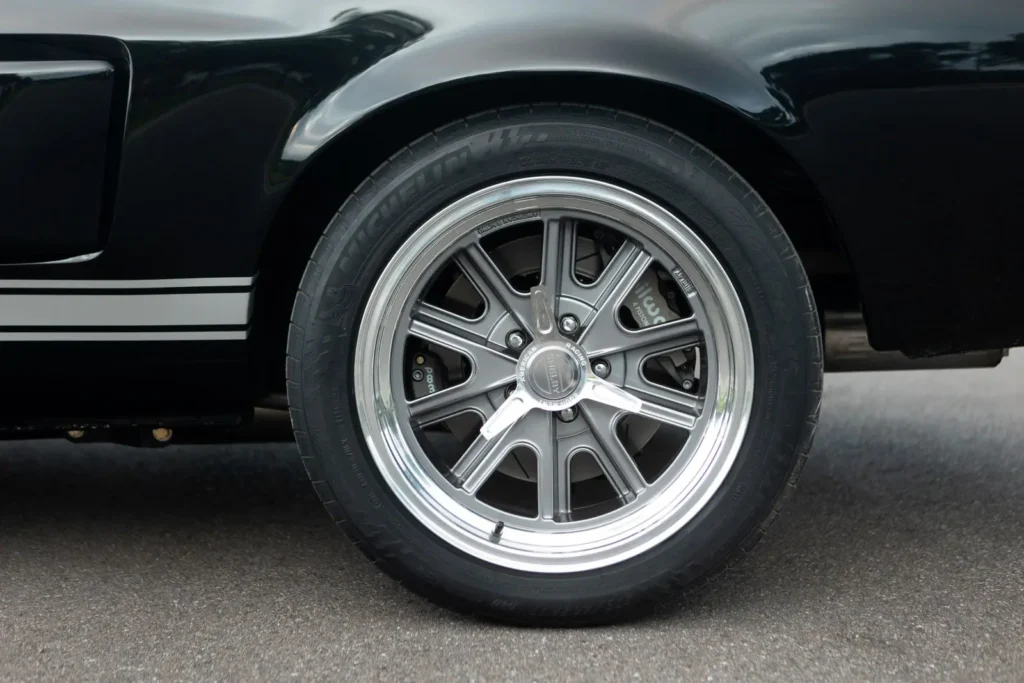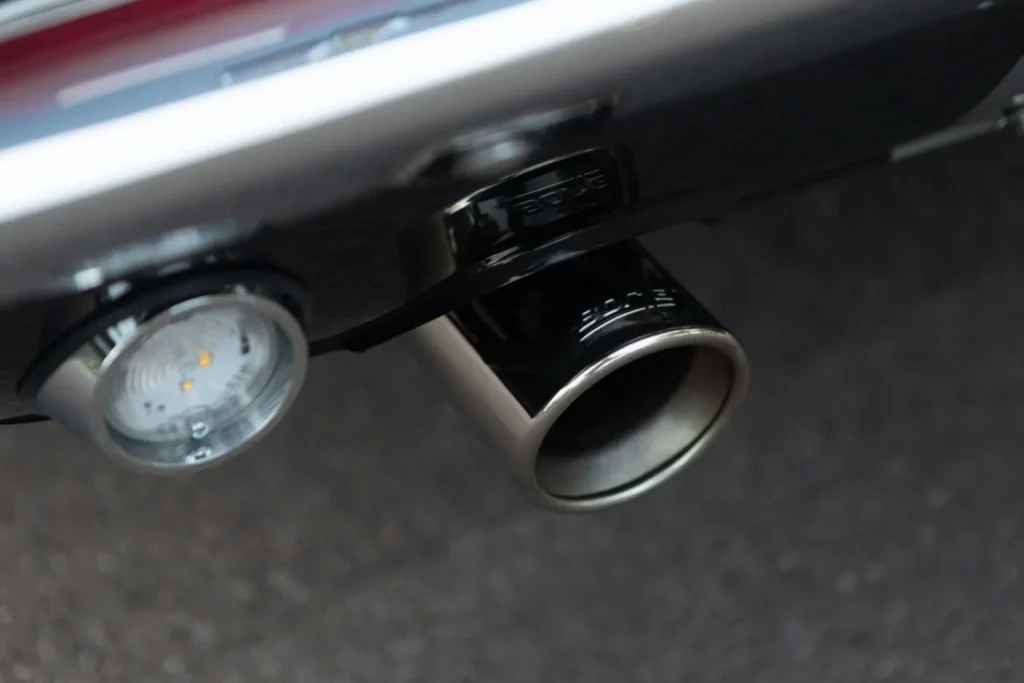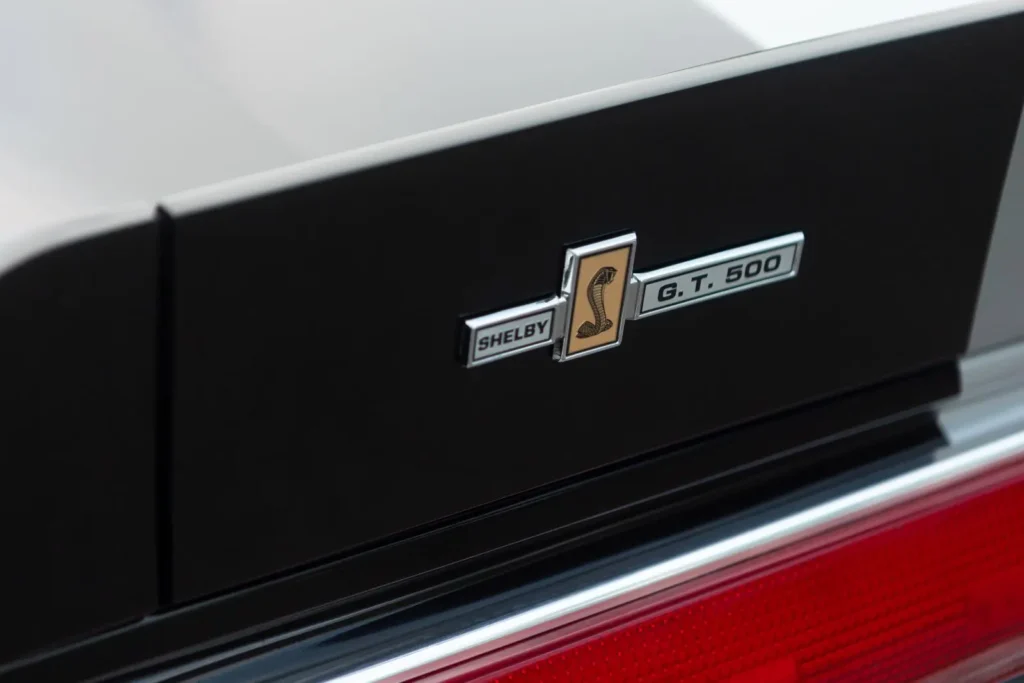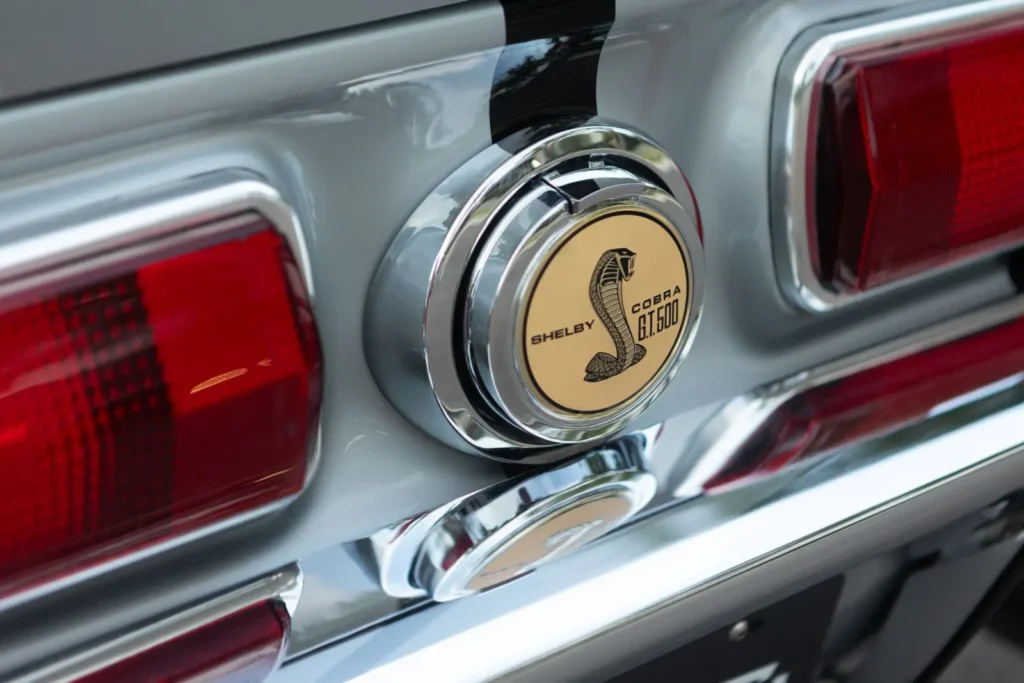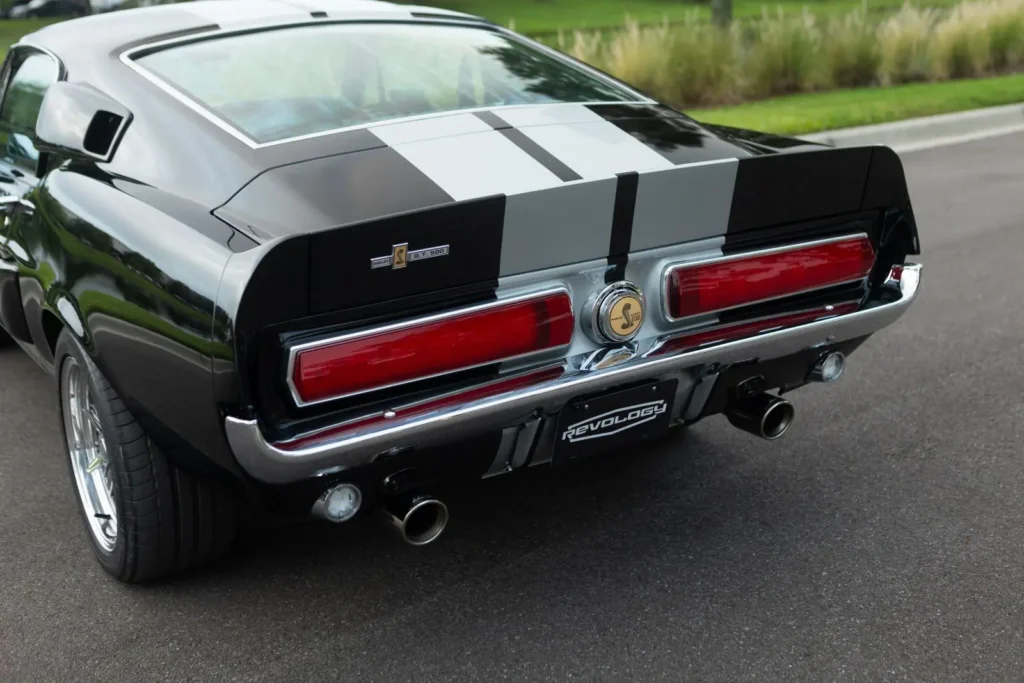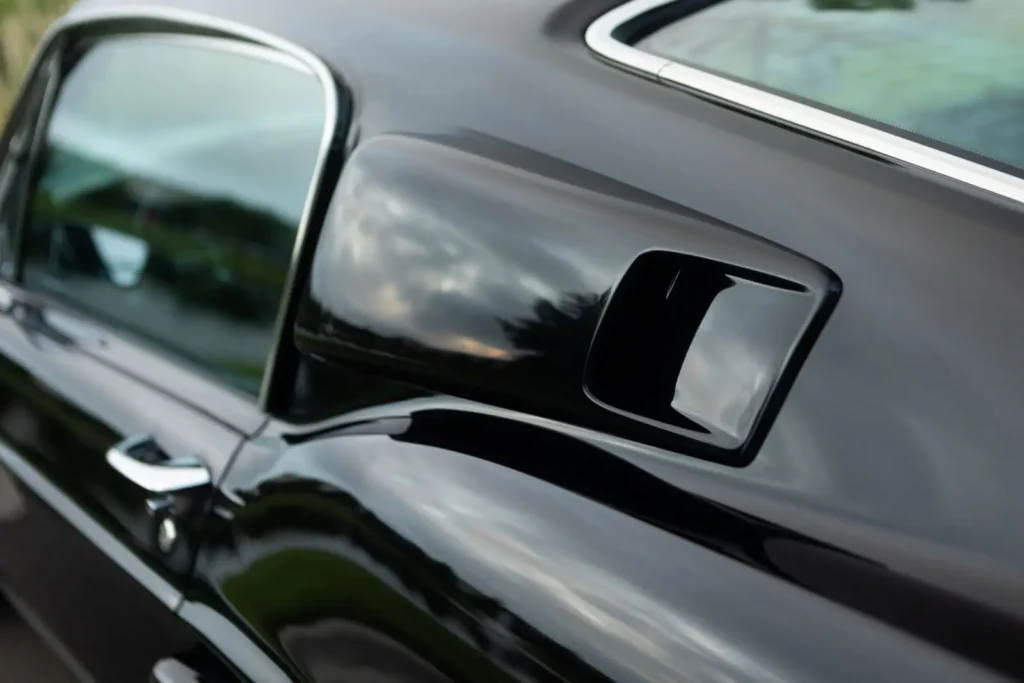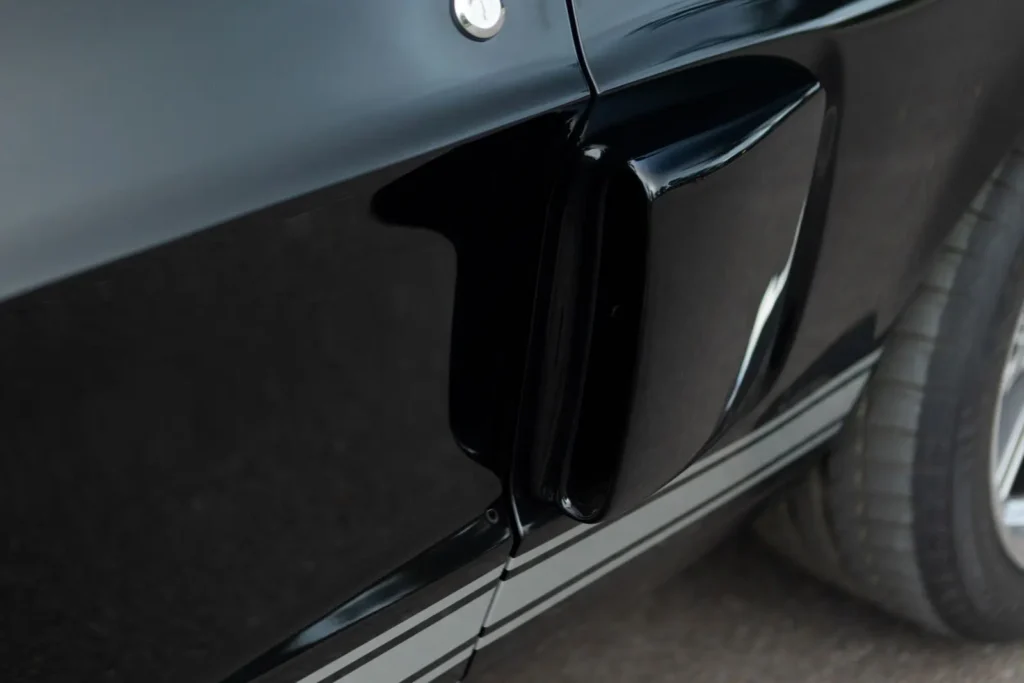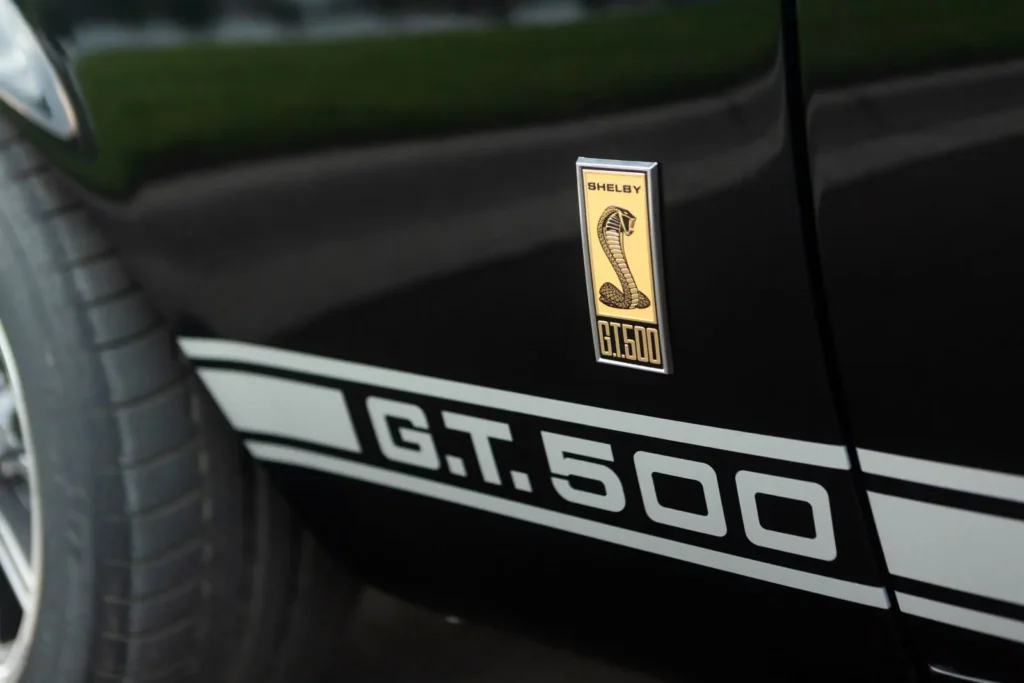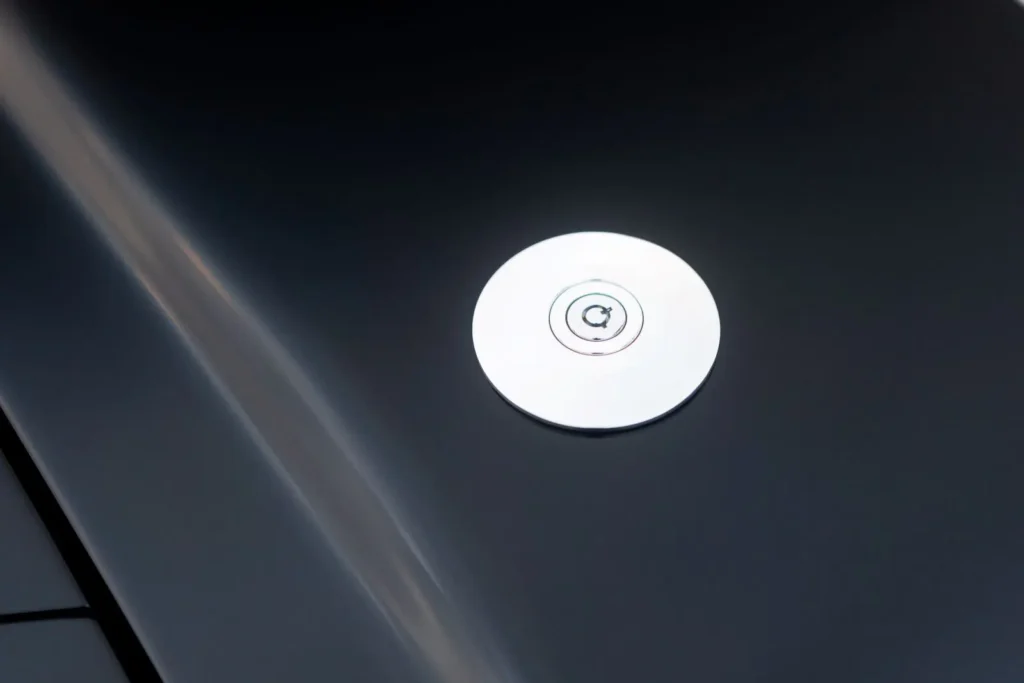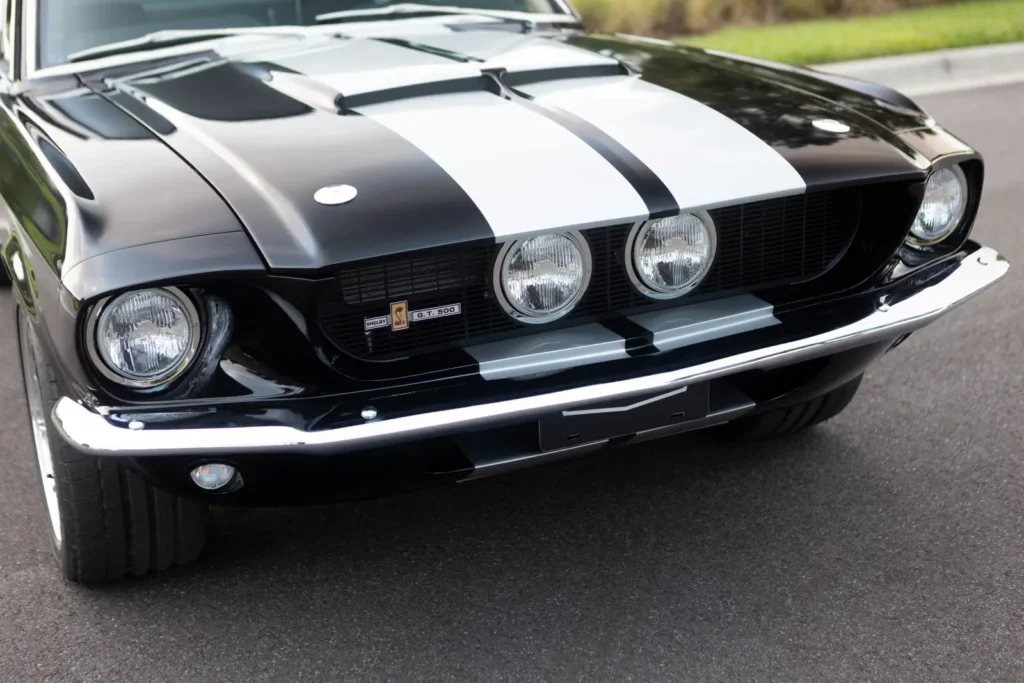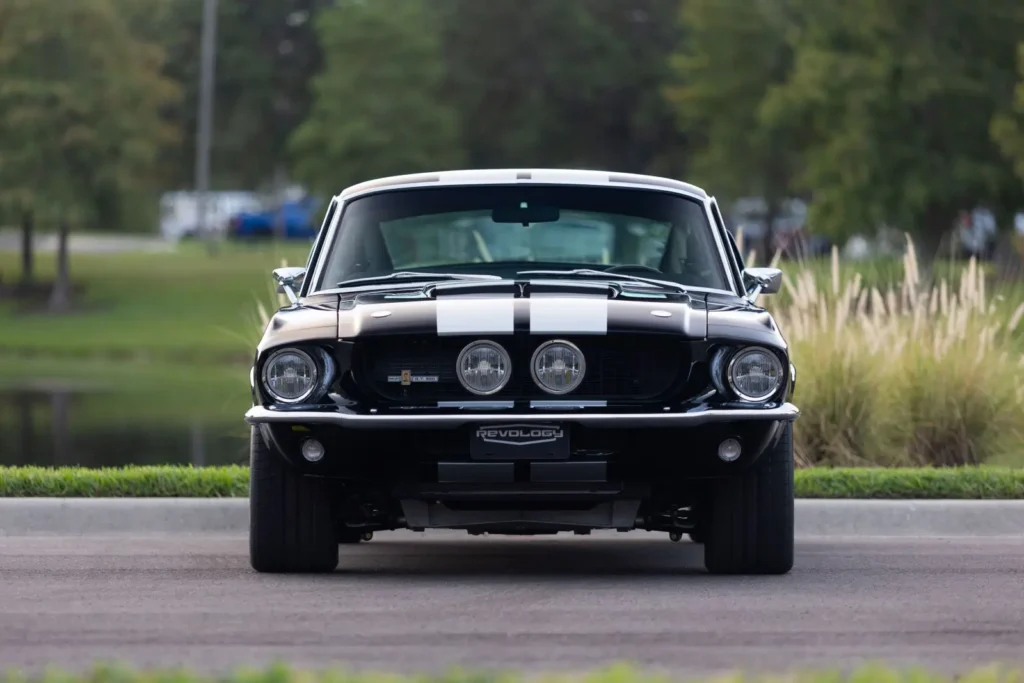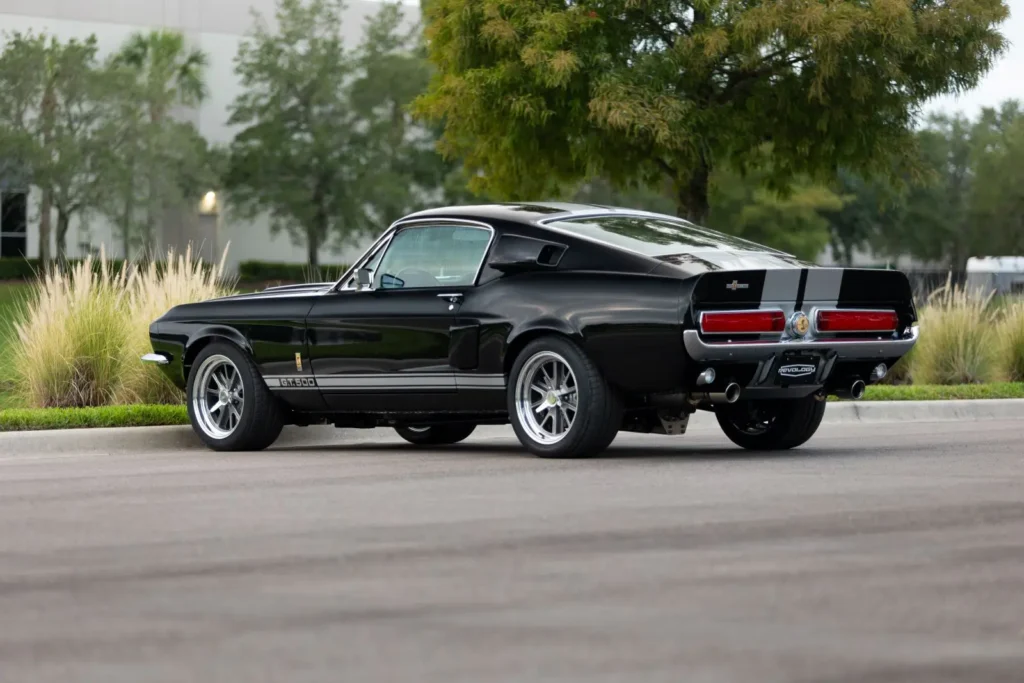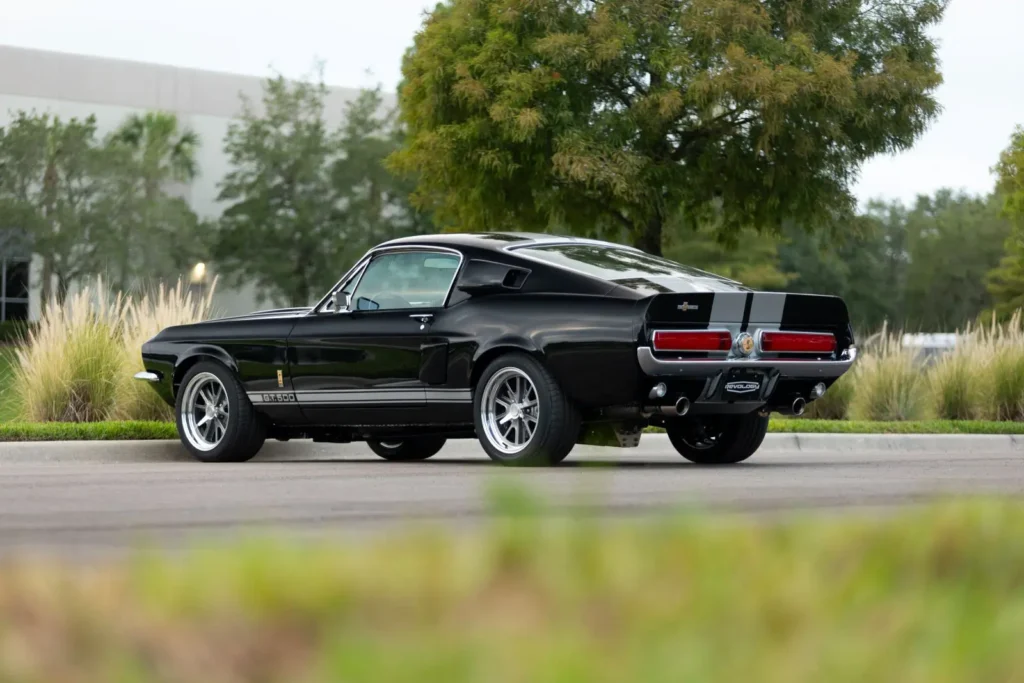Hi, I’m Tom Scarpello of Revology Cars! This is car number 155, a 1967 Shelby GT500 in Acapulco Blue Metallic with Silver Frost LeMans stripes and Saddle Nappa leather interior. Today I’m going to take you on a walk around of this car, and we’re going to go for a drive. Let’s get started!
All right. 1967 Shelby GT500 Acapulco Blue with Silver Frost LeMans stripes. So, I know what you’re thinking. They didn’t come with Silver Frost stripes. And you’re right, but actually, they didn’t come with stripes at all. In 1967, Shelby American had planned to offer the LeMans stripe option as a factory option, but at the last minute they discontinued it. They were having problems with production, having issues painting the stripes in production, also with the fiber glass parts that were new for 1967.
So the cars that you see out there that have Le Mans stripes that were painted either by a dealer or, you know, the customer had someone paint the stripes on the car for them. Well, it’s understandable they ran into production problems. They couldn’t do it. It’s very difficult to do painted stripes in a production setting. It’s very time consuming. There’s a lot of elements there that you have to control. So why is it so difficult to do a painted stripe in production?
Well, you’ve got several steps in the process. You’ve got to paint the base coat of the body color, you’ve got to paint the base coat of the stripes, and you’ve got to clear the whole thing. So some people will paint the body color first and then the stripe second, which I think, logically, you might think that’s the way to do it.
But the way that we do it at Revology cars is the opposite. We actually paint the entire body the stripe color. Then we lay out the stripes, then we paint the exterior color, and then we clear coat over everything. So why do we do it?
Well, first of all, it requires less masking. If you’re painting the stripe first, all you have to mask is the stripe color, the area that’s going to be left, that first coat color. And if you were to paint the stripe second, you’ve got to mask everything else, and that’s a lot more masking. And masking is unproductive time, and in manufacturing, you need to eliminate unproductive time as much as possible.
The second thing is that by masking the stripe, we’re able to ensure that that stripe dimensions are absolutely 100% accurate every single time. Now, these stripes are not the same width throughout the whole, the front to the back of the car. So they actually start narrow and then they widen and then they narrow again.
So, you got to get the dimensions absolutely perfect and obviously the position, and they can’t be going off to one side. And the center section between the two stripes has to be two inches, you know, perfectly two inches all the way through the length of the body. And that, you know, is pretty difficult to execute when you’re laying out the stripes by hand.
So, we use a laser cut stencil, and that allows us to position, you know, the stencil on the body using the laser to center it. And that means the stripes are always in the same place every single time. It doesn’t matter which one of our four painters is, is doing it on which day of the week or what shift, it’s always going to look the same.
The next thing is that you’ve got a certain amount of time to do the layout. So if you’re laying it out by hand, it’s going to take a lot longer. If you lay it out using the stencils, it’s quicker. And the time that you have is known as open time between the base coat and the clear coat.
You’ve got, you know, x number of hours that you can apply that coat of clear. If you don’t meet that window, then you’ve got to go back over and you’ve got to scuff the entire surface again so that the clear coat will adhere properly to the base coat. And that’s something you just absolutely want to avoid because it’s difficult to be 100% sure that you’ve scuffed every single surface. It’s very time consuming. And again, that’s a lot of waste and we want to eliminate waste.
So, by having this stripe process laid out the way that we do it, it allows us to ensure quality, ensure consistency. Every car looks the same, we stay within our cycle time and we stay within the parameters of the materials that we use to ensure we have good adhesion of the finished product.
So, the way we paint LeMans stripes is just one example of how we design for manufacturing. It’s so important that you have consistency throughout the process. If you have consistency throughout the entire process, then you can be assured that the end result will be also consistent. And if you don’t, then you just don’t really know what you’re going to get at the end.
And granted, laying out stripes is not safety item like brakes or steering, but it’s pretty important. I mean, you make a major investment, and you want to make sure that that product is built correctly. And this is just one aspect of craftsmanship that needs to be measured and monitored to ensure it’s accurate. It’s perfect, it’s consistent. You know, I’m always kind of surprised by companies in this segment that talk about their cars being a one off and how great it is that they’re one offs. Right?
And everything that they do is different. And I think, I don’t get that. That’s completely backwards. I mean, if you’re doing like, a custom suit, sure, that’s fine. But you don’t drive your family around in a suit. You know, you’re going down the road 70 miles an hour with your family in the car. You want to make sure that everything is going to work, you know, to build a manufacturing process. It’s a lot of work. It’s a lot of hours, it’s a lot of resources. But we do, and we’re very committed to doing things consistently and always finding ways to improve the process.
And as our volume started increasing, you know, you kind of find what your next bottleneck is. You know, where, where the next issue is that is going to slow you down and you’ve got to come up with a solution for that. You know, I find that really interesting. It’s always a constant challenge. You just keep finding new problems and solving them, and that’s cool. And you just kind of get to a higher level of productivity and quality and craftsmanship, and it’s very rewarding.

